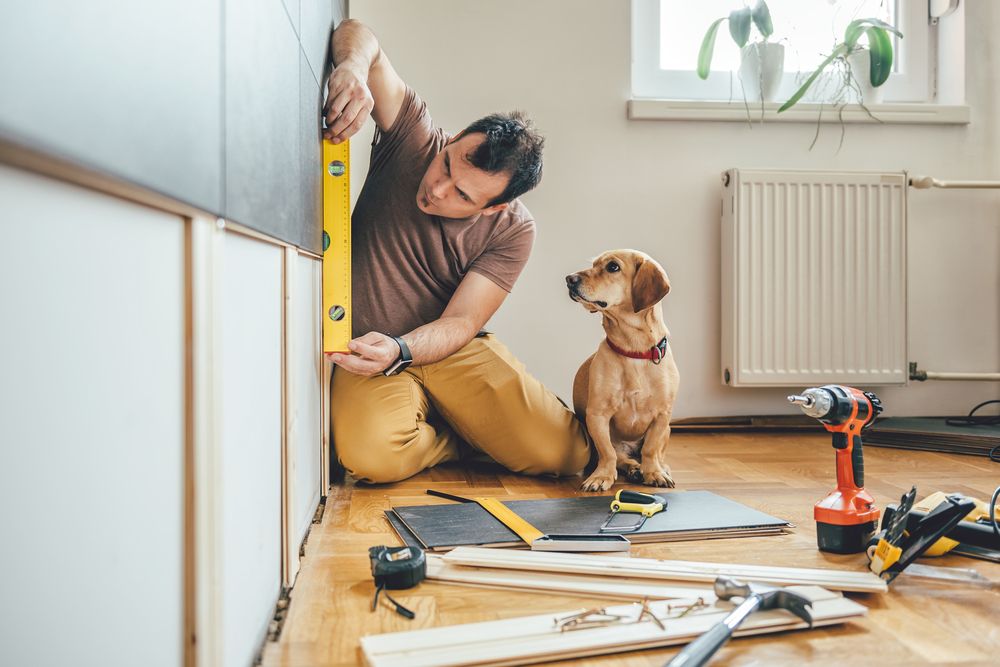
Welcome to the world of DIY home repairs, where the roll-up-your-sleeves approach not only brings immense personal satisfaction but can also lead to substantial savings. Whether you’re a seasoned DIY enthusiast or a novice ready to learn, tackling home repairs on your own is both empowering and economical. In this article, we’ll explore various budget-friendly DIY home repairs that will enhance your living space without breaking the bank.
Understanding Basic Home Repair Tools and Materials
Embarking on your DIY journey requires a fundamental understanding of the tools and materials you’ll need. Start by equipping yourself with a basic toolkit that includes essentials like a hammer, screwdrivers, pliers, a tape measure, a level, a utility knife, and an adjustable wrench. Investing in quality tools might have a small upfront cost, but they pay off in the long run by making your work easier and safer.
When it comes to materials, it’s crucial to know which items you should have on hand. For general home maintenance, keep a stock of screws, nails, wall anchors, caulk, and sealant. These supplies will cover a wide range of repairs, from fixing loose fixtures to sealing gaps and preventing water damage.
Moreover, don’t underestimate the power of paint. A fresh coat can rejuvenate a room or a piece of furniture at minimal expense. Opt for high-quality paint that offers good coverage and durability. You’ll save money by avoiding the need for multiple coats and by extending the time between touch-ups or repaints.
Fixing Common Household Issues
One of the best ways to save money through DIY is by learning to fix common household issues. Dripping faucets, running toilets, and squeaky doors are all problems that can typically be resolved with a little time and effort.
For a dripping faucet, often a simple washer replacement will do the trick. Turn off the water supply, disassemble the faucet, and replace the worn-out washer. Similarly, a running toilet can often be remedied by adjusting or replacing the flapper or the fill valve, both of which are inexpensive and easy to handle.
Squeaky doors can be silenced by applying lubricant to the hinges. If the squeak persists, it may be due to misalignment, which can sometimes be fixed by tightening or adjusting the hinge screws. These small repairs can prevent the escalation of issues, saving you from more costly fixes down the line.
Weatherproofing Your Home on a Budget
Weatherproofing your home is a proactive DIY project that can lead to significant energy savings. Start with your windows and doors, checking for drafts and sealing them with weather stripping or caulk. This simple task can prevent heat loss in the winter and keep your home cool in the summer, reducing your energy bills.
Insulating your attic and basement can also be a cost-effective DIY project, as these areas are common culprits for heat loss. While installing insulation might seem daunting, many home improvement stores offer rentals of insulation blowers, and with a bit of research, you can effectively insulate your home yourself.
Another weatherproofing tip is to insulate your water heater and hot water pipes. This can be done with pre-slit foam pipe insulation and water heater blankets, both of which are affordable and easy to install. By reducing heat loss, your water heater won’t have to work as hard, which saves on energy costs.
Upcycling and Repurposing for Home Improvements
Embrace the concept of upcycling and repurposing items you already own for home improvements. This approach not only saves money but also gives new life to items that might otherwise be discarded.
Consider refinishing or repainting furniture instead of buying new. With a bit of sandpaper, some paint, and a creative vision, you can transform an outdated piece into something fresh and modern. Similarly, repurposing items like old ladders into bookshelves or turning crates into storage units can add character to your home without the need for expensive purchases.
Get creative with leftovers, too. Leftover tiles can become coasters, trivets, or even art. Scrap wood can be crafted into picture frames, shelves, or garden planters. The possibilities are endless, and with the multitude of online tutorials available, you’re sure to find a project that inspires you.
Enhancing Curb Appeal on a Dime
Finally, let’s talk about enhancing your home’s curb appeal without spending a fortune. Simple changes like painting your front door, updating house numbers, or adding a new mailbox can make a big impact. Consider DIY landscaping projects like planting a garden, creating a stone path, or installing solar-powered garden lights for an added touch of charm.
Regular maintenance, such as power washing your siding, cleaning gutters, and trimming shrubs, can also greatly improve your home’s exterior appearance. These tasks require more elbow grease than money, and they go a long way in keeping your home looking its best.
Acquiring handy skills for home repairs and improvements is not only satisfying but also financially savvy. By equipping yourself with the right tools, knowledge, and a bit of creativity, you can tackle a wide array of projects that keep your home in tip-top shape while keeping your wallet happy. Remember, the most important tool in your DIY arsenal is your willingness to learn and take on new challenges. Happy repairing!
